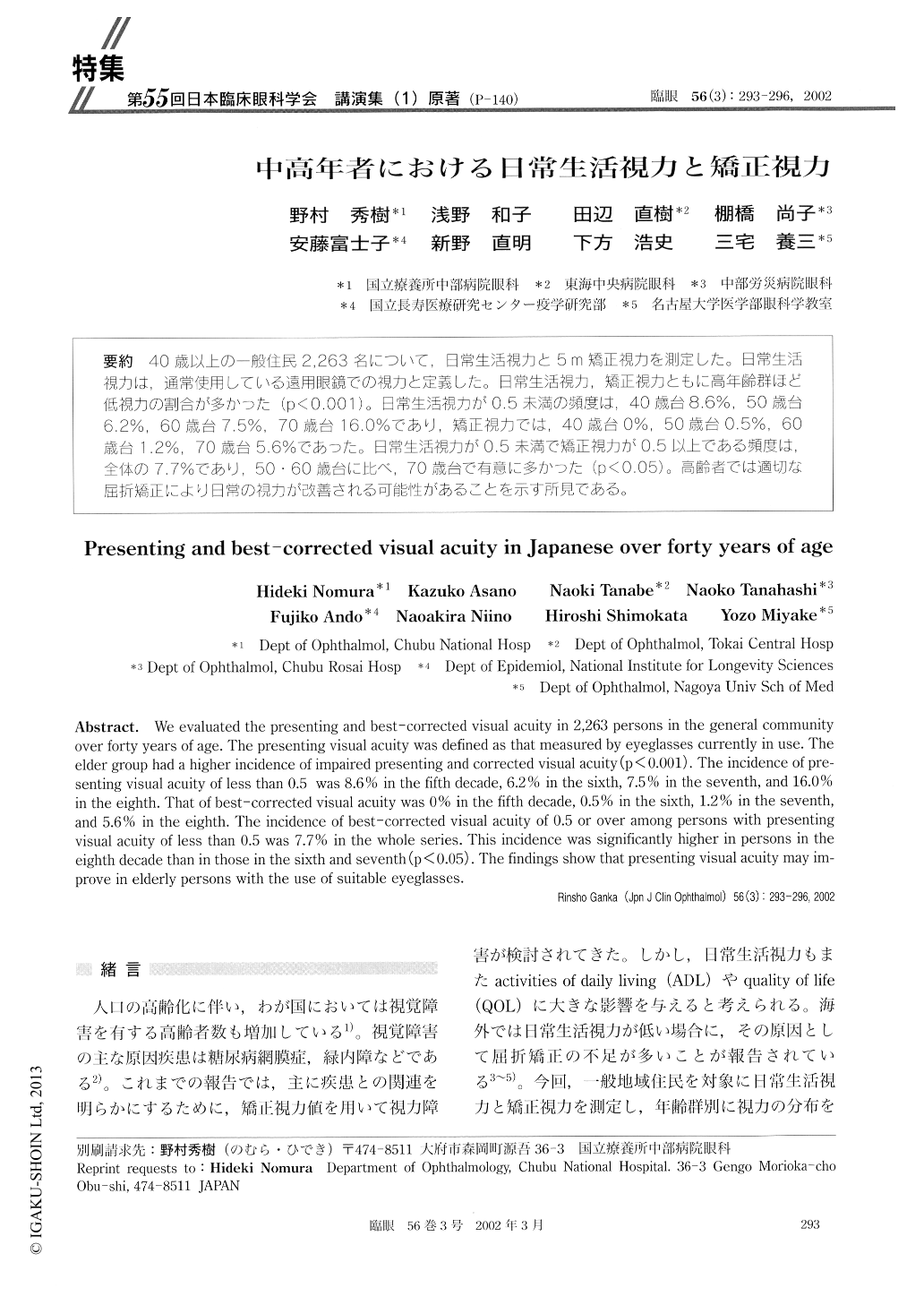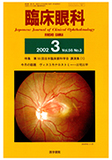Japanese
English
- 有料閲覧
- Abstract 文献概要
- 1ページ目 Look Inside
(P−140) 40歳以上の一般住民2,263名について,日常生活視力と5m矯正視力を測定した。日常生活視力は,通常使用している遠用眼鏡での視力と定義した。日常生活視力,矯正視力ともに高年齢群ほど低視力の割合が多かった(p<0.001)。日常生活視力が0.5未満の頻度は,40歳台8.6%,50歳台6.2%,60歳台7.5%,70歳台16.O%であり,矯正視力では,40歳台0%,50歳台0.5%,60歳台1.2%,70歳台5.6%であった。日常生活視力が0.5未満で矯正視力が0.5以上である頻度は,全体の7.7%であり,50・60歳台に比べ,70歳台で有意に多かった(p<0.05)。高齢者では適切な屈折矯正により日常の視力が改善される可能性があることを示す所見である。
We evaluated the presenting and best-corrected visual acuity in 2,263 persons in the general community over forty years of age. The presenting visual acuity was defined as that measured by eyeglasses currently in use. The elder group had a higher incidence of impaired presenting and corrected visual acuity (p<0.001). The incidence of pre-senting visual acuity of less than 0.5 was 8.6% in the fifth decade, 6.2% in the sixth, 7.5% in the seventh, and 16.0% in the eighth. That of best-corrected visual acuity was 0% in the fifth decade, 0.5% in the sixth, 1.2% in the seventh, and 5.6% in the eighth. The incidence of best-corrected visual acuity of 0.5 or over among persons with presenting visual acuity of less than 0.5 was 7.7% in the whole series. This incidence was significantly higher in persons in the eighth decade than in those in the sixth and seventh (p<0.05) . The findings show that presenting visual acuity may im-prove in elderly persons with the use of suitable eyeglasses.

Copyright © 2002, Igaku-Shoin Ltd. All rights reserved.


